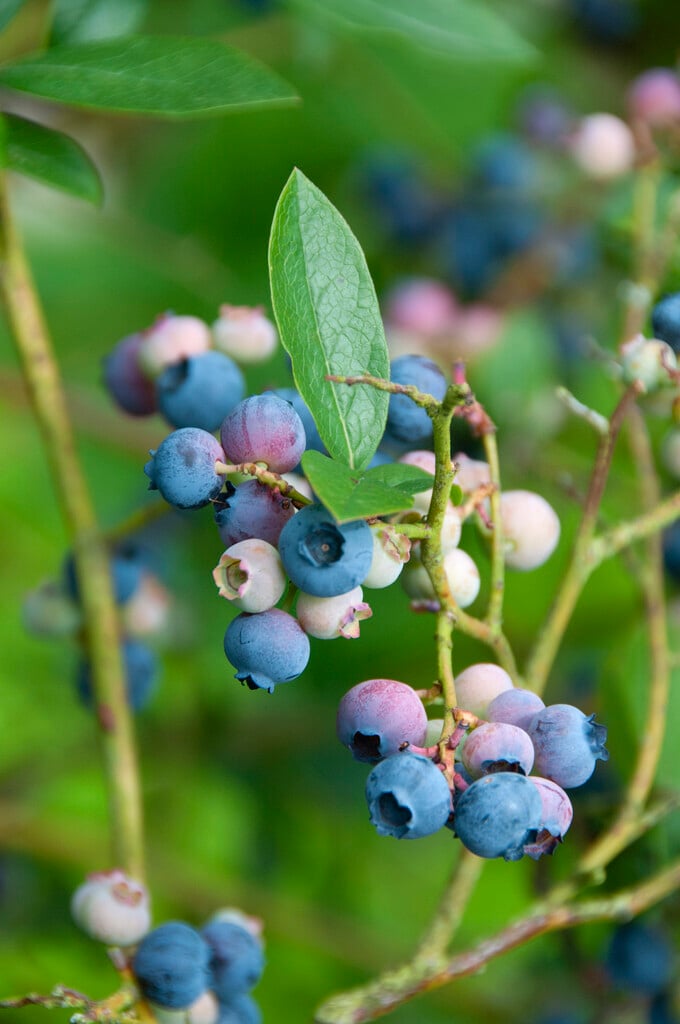Vaccinium corymbosum 'Bluecrop' (F)
blueberry 'Bluecrop'
A vigorous, deciduous shrub with a spreading growing habit up to 1.5m tall with small mid-green leaves that turn yellow and red in autumn. Clusters of small, white flowers appear in spring followed by heavy crops of large, blue, firm fruits with a rich flavour in early-mid summer

Buy this plant
Size
Ultimate height
1–1.5 metresTime to ultimate height
10–20 yearsUltimate spread
0.5–1 metresGrowing conditions
Moisture
Moist but well–drainedpH
AcidColour & scent
| Stem | Flower | Foliage | Fruit | |
| Spring | White | Green | ||
|---|---|---|---|---|
| Summer | Green | Blue | ||
| Autumn | Yellow Red | |||
| Winter |
Position
- Full sun
- Partial shade
Aspect
East–facing or South–facing or West–facing
Exposure
Sheltered Hardiness
H6Botanical details
- Family
- Ericaceae
- Native to GB / Ireland
- No
- Foliage
- Deciduous
- Habit
- Bushy, Spreading branched
- Genus
Vaccinium can be evergreen or deciduous shrubs or small trees, with simple leaves and small, bell- or urn-shaped flowers followed by juicy, sometimes edible berries
- Name status
Accepted
- Horticultural Group
- This genus produces fruit, but not necessarily edible fruit
How to grow
Cultivation
Plant in a sheltered site in well-drained, moisture-retentive, acidic soil, (pH 4.5-5.5) in sun or part shade. Alternatively grow in containers or raised beds filled with peat-free, ericaceous compost . Pot grown plants benefit from winter protection. For optimal pollination and yield plant three different cultivars. See blueberry cultivation for further advice
Propagation
Propagate by taking softwood cuttings in late spring or semi-ripe cuttings in early summer
Suggested planting locations and garden types
- City and courtyard gardens
- Cottage and informal garden
- Patio and container plants
- Wildlife gardens
- Edible fruit
- Flower borders and beds
Pruning
More mature plants benefit from regular pruning. See blueberry pruning
Pests
May be susceptible to vine weevil larvae damage especially if container grown. Protect ripening fruit with netting from birds
Diseases
May be susceptible to honey fungus (rarely), powdery mildews, root rot and chlorosis due to iron and manganese deficiency; see nutrient deficiencies
Get involved
The Royal Horticultural Society is the UK’s leading gardening charity. We aim to enrich everyone’s life through plants, and make the UK a greener and more beautiful place.